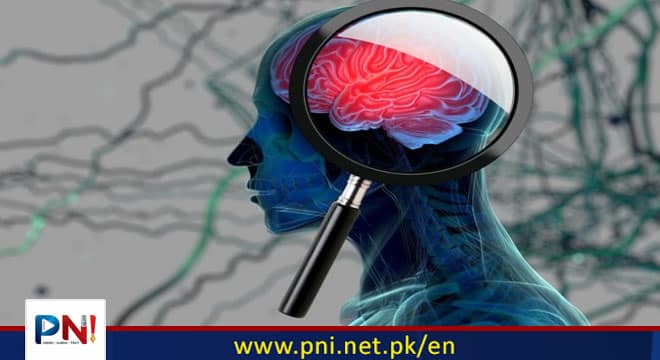ISLAMABAD, April 01 (Online): Previous studies show that genetics may play a role in the development of Alzheimer’s disease.
Researchers recently added to this concept by identifying 17 genetic variants associated with Alzheimer’s disease in five genomic regions.
The findings included genetic variant data from ethnic groups historically underrepresented in genetic studies regarding Alzheimer’s.
Over the past few years, more research has supported the idea that geneticsTrusted Source may play a role in the development of Alzheimer’s disease (AD) — a type of dementia affecting about 32 million peopleTrusted Source globally.
Now, researchers from the Boston University School of Public Health and The University of Texas Health Science Center at Houston further add to this concept with new research that has identified 17 genetic variantsTrusted Source — a change to the DNA sequence — associated with Alzheimer’s in five genomic regions.
The study was recently published in the journal Alzheimer’s & Dementia: The Journal of the Alzheimer’s AssociationTrusted Source.
Genetic variants and Alzheimer’s disease
While scientists are still not completely sure what causes Alzheimer’s disease, most believe it develops from a combination of factors including genetics, age-related changes in the brain, and certain lifestyle and environmental factors.
Over the last few years, more research has been uncovering how genetics might play a role in the development of Alzheimer’s disease.
For example, a study published in April 2022 identified 75 gene locationsTrusted Source correlated to an increased risk for Alzheimer’s disease, among them 42 locations that had not been previously linked to the condition.
Research published in February 2023 discovered a genetic variant often found in people of African ancestryTrusted Source may heighten Alzheimer’s disease risk.
A study published in September 2023 reported a genetic mutation within the brain’s immune cellsTrusted Source that might increase a person’s risk for Alzheimer’s disease.
“There are limited drugs currently available to treat Alzheimer’s disease, and none have high efficacy,” Dr. Anita DeStefano, professor of biostatistics at Boston University School of Public Health (BUSPH) and lead author of this study, explained to Medical News Today.
“There are currently no therapeutics that prevent Alzheimer’s disease. Understanding the genetic factors that influence (the) risk for Alzheimer’s disease or protection from Alzheimer’s disease provides new biological insights that can lead to the identification of novel drug targets to facilitate the development of new therapeutic approaches.”
— Dr. Anita DeStefano, lead study author
17 new genetic variants identified
For this study, researchers used whole genome sequencingTrusted Source data from the Alzheimer’s Disease Sequencing Project (ADSP) — a genetics initiative launched by the National Institutes of Health in 2012 as part of the National Alzheimer’s Project Act.
Scientists had access to information on more than 95 million genetic variants from almost 4,600 people with or without Alzheimer’s disease.
After analyzing the data, study researchers uncovered 17 significant variants associated with Alzheimer’s disease located in five genomic regions.
“Many recent studies of Alzheimer’s disease genetics are genome-wide association studies (GWAS)Trusted Source, which look across the human genome and identify regions that are associated with risk for Alzheimer’s disease,” Dr. Chloé Sarnowski, assistant professor of epidemiology in the School of Public Health at The University of Texas Health Science Center at Houston and corresponding author of this study told MNT.
“These regions will contain hundreds of genes and thousands of variants, and we won’t initially know which gene or change in the gene is biologically relevant.”
“Whole genome sequence data provides information on every change (variation) in the DNA sequence of the study participants and enables us to refine the information from GWAS studies as well as make novel discoveries.
One analogy is to compare the DNA sequence in the human genome to the string of letters that make up a book. Earlier GWAS studies identified common ‘spelling errors’ and brought us to the specific pages where important errors occurred but did not identify every letter that changed or was missing. With whole genome sequencing, we are looking at every letter on the page and more comprehensively understanding all the changes and ‘spelling errors.’”
— Dr. Chloé Sarnowski, corresponding study author
KAT8 genetic variant and Alzheimer’s risk
One of the most notable genetic variants, the scientists reported, was the lysine acetyltransferase 8 (KAT8Trusted Source) variant.
Past studies show the KAT8 is important for cerebral development and may play a role in the development of Alzheimer’s disease-related dementiasTrusted Source and Parkinson’s disease.
Additionally, through the ADSP database, the research team had access to genetic variant data from a wide range of ethnicities, including Black/African-AmericanTrusted Source Hispanic/LatinoTrusted Source, which researchers say have been historically underrepresentedTrusted Source in genetic studies regarding Alzheimer’s disease.
“Historically, the vast majority of individuals included in genetic studies of Alzheimer’s disease have been of European ancestry,” Dr. DeStefano said.
“We know that (the) prevalence of Alzheimer’s disease varies across population groups, with African-Americans having a higher prevalence. So to understand the full spectrum of Alzheimer’s disease risk it is important for studies to represent diverse genetic ancestry and diverse environments in terms of social determinants of health.”
‘Major advance’ for future Alzheimer’s treatments
MNT spoke about this study with Dr. Karen D. Sullivan, a board certified neuropsychologist, owner of I CARE FOR YOUR BRAIN, and Reid Healthcare Transformation Fellow at FirstHealth of the Carolinas in Pinehurst, NC.
Dr. Sullivan called this research a “major advance” that puts science-based interventions one significant step closer to a breakthrough treatment for Alzheimer’s disease.
“I am also impressed that the researchers purposefully sought out ethnically diverse participants as communities of color have historically been underrepresented in genetic studies of Alzheimer’s disease despite their high incidence,” she continued.
“As Alzheimer’s disease is the most common subtype of dementia and a rapidly aging society, we are really in a race against time to find more effective treatments,” Dr. Sullivan added.
“The cost of caringTrusted Source for this massive increase in people with dementia is immense, with treatment as it stands today, and threatens the future viability of healthcare systems to manage it. Aside from (the) cost, we know the human toll of dementia is enormous for all people affected.”
Dr. Sullivan said she would like to see this research’s findings extended to much larger sample sizes and the variants linked to their respective expressions or phenotypesTrusted Source.
“For example, what impact does the KAT8 variant, associated with Alzheimer’s disease in both the single and rare variant analyses, have on the specific cognitive and behavior changes in these groups?
We always must remember that brain structure and function don’t have a 1-to-1 relationship — much like genotypeTrusted Source and phenotype, one does not always perfectly predict the other. So, while this is an impressive step forward in our understanding of the genetics of Alzheimer’s disease, we still need to tie it back to what changes in human beings with this disease.”
Follow the PNI Facebook page for the latest news and updates.








